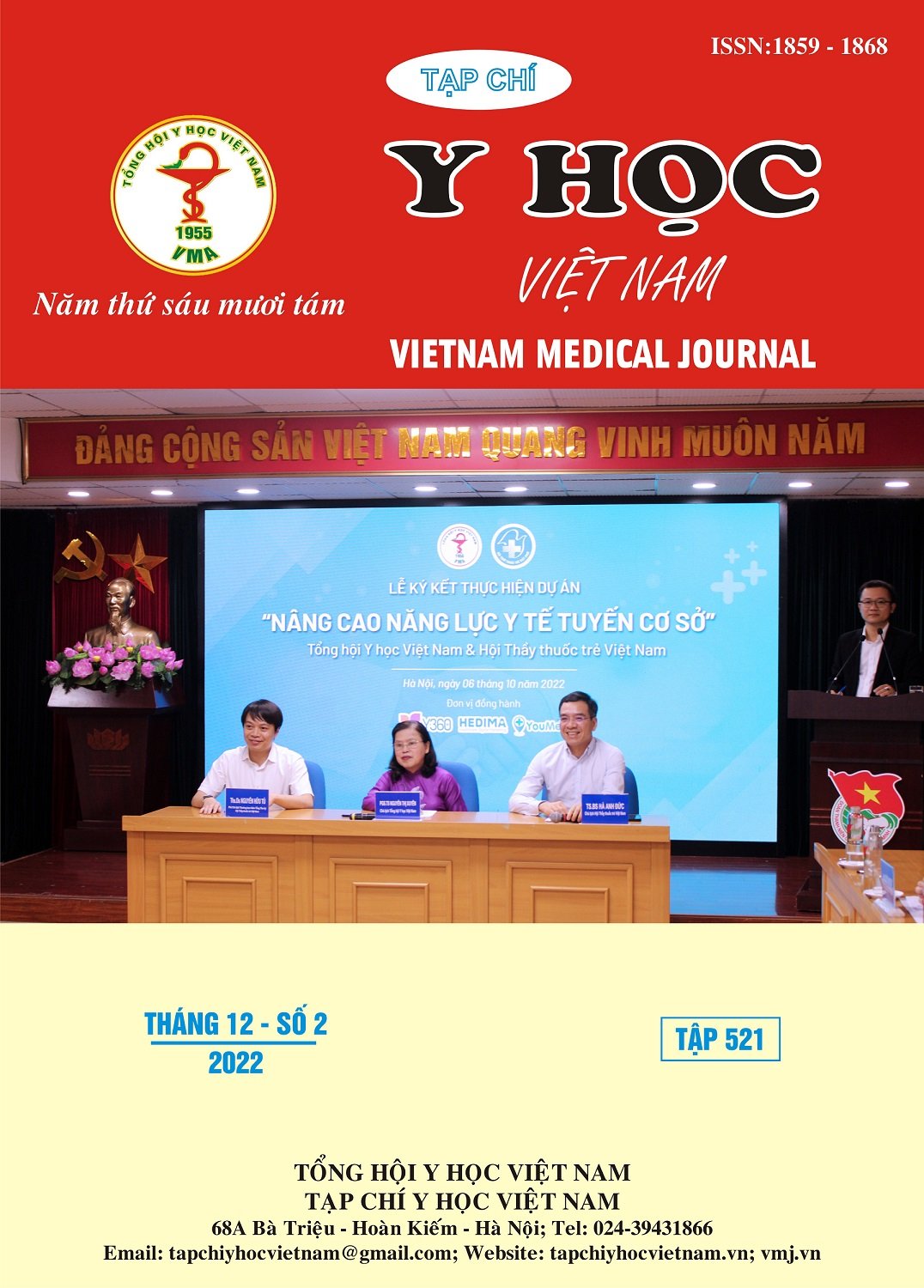EVALUATION OF SOME DIFFICULTIES IN COCHLEAR IMPLANT WITH INNER EAR MALFORMATIONS
Main Article Content
Abstract
Objective: Evaluation of some difficulties in cochlear implant in patients with inner ear malformations. Study design: Descriptive cases. Setting: Ha Noi medical university Hospital, Tam Anh Hospital. Patients: 31. Results: Diagnostic imaging of ear malformations in both the cochlea and vestibular accounted for 54.8% (17/31), malformation of the vestibular part alone accounted for 38.7% (12/31), malformation only Type II hypoplastic cochlea and normal vestibule account for 6.5% (2/31). There are 12/31 patients without seeing cochlear nerve in the normal anatomical position. Surgery was found in 11/3135.4% cases with aberrant facial nerve, narrow facial recess < 2.5 mm was 12/31 (38,7%) cases, no detective round window in 9/31(29,0%) cases. Electrode type used 11/31 patients using short electrodes, auditory response (ART) 19/31 full electrode response to stimulation, 12/31 patients partial response, among This has a case where only 5 electrodes have a response. Conclusion: Cochlear implant in patients with inner ear malformations is very difficult because it is often accompanied by malformations in the middle ear, so there are many potential complications. If the cochlear nerve is not found in the normal position on imaging, it is still possible to have cochlear implant depending on the specific case.
Article Details
Keywords
Inner Ear malformations, anomalous cochleovestibular anatomy, Cochlear implant
References
2. Korver AH, Konings S, Dekker FW, et al, Newborn hearing screening vs later hearing screening and developmental outcomes in children with permanent childhood hearing impairment, Jama, 2010, 304(15), 1701-1708.
3. Holman MA, et. al, Cochlear Implantation in Children 12 Months of Age and Younger, Otology & Neurotolog, 2013, 34: 251-258
4. Sennaroglu, L. Bajin MD, Classification and current management of inner ear malformation, Balkan Med J, 2017, 34;397-341
5. Phelps PD, Cochlear implants for congenital deformities, J Laryngol Otol, 1992 Nov;106(11):967- 70
6. Emmanuel A M Mylanus, Congenital malformation of the inner ear and pediatric cochlear implantation, Otol Neurotol, 2004 May; 25(3):308-17
7. Papsin BC, Cochlear implantation in children with anomalous cochleovestibular anatomy, Laryngoscope, 2005 Jan;115 (1Pt 2Suppl 106):1-26
8. Loundon N, et. al, Medical and Surgical Complications in Pediatric Cochlear Implantation, Arch Otolaryngol Head Neck Surg. 2010; 136(1):12-15


